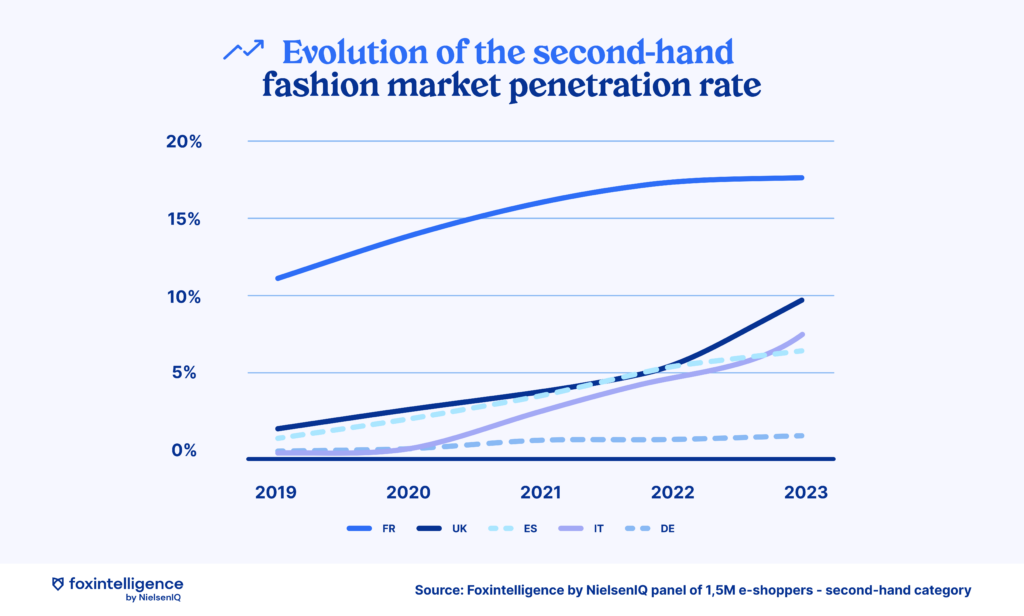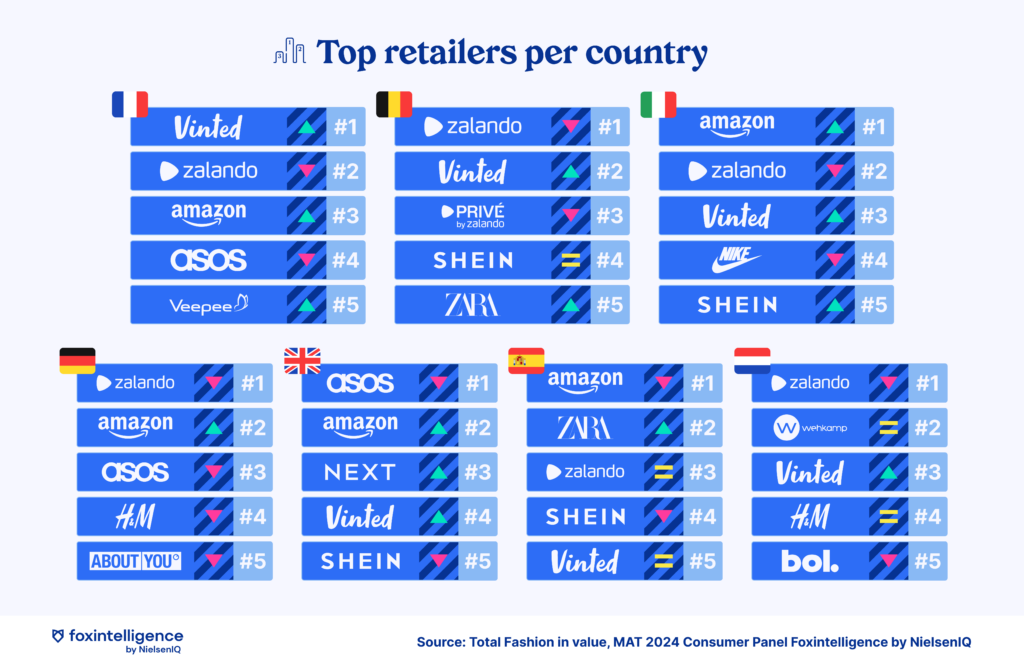The Growth of the Second-Hand Market in Europe
The evolution of the second-hand market in Europe shows varying dynamics across different countries, with significant growth in some.
France stands out as the most mature market, with the share of the second-hand market reaching 17.8% in 2023, up from 11.3% in 2019. This rapid progression underscores the growing acceptance of this consumption model among French consumers.
Other European markets are also experiencing notable acceleration. In the UK, Italy, and Spain, the share of the second-hand market has significantly increased, illustrating a particularly dynamic trend.
These variations reflect different consumer behaviors across Europe, but a common trend emerges: the rise in the share of the second-hand market is undeniable, driven by consumers’ growing interest in economical and practical alternatives, as well as an increasingly diverse and attractive offering.
A Rapid and Sustainable Expansion
The rise of the second-hand market is no longer just a passing trend. This exponential growth is based on several key factors that make it an essential market reality:
- Ease of Use: Platforms like Vinted make buying and selling second-hand items intuitive, attracting a broad audience.
- Commitment to Sustainability: Environmental awareness is driving many consumers to choose resale to reduce their carbon footprint.
- Cost Savings: Consumers find fashion items at significantly lower prices, boosting demand for second-hand goods.
- Environmental and Economic Impact: Resale contributes to reducing textile waste and supports a more sustainable circular economy.
The Rise of the Mixers Trend: Combining New and Second-Hand
An emerging trend is gaining traction in the fashion market: mixers. These consumers no longer limit themselves to one mode of purchase but opt for a blend of new and second-hand clothing, creating a new paradigm in the fashion industry.
In Europe, the proportion of mixers continues to grow, while that of buyers exclusively focused on new items is decreasing.
In fact, the percentage of mixers ranges from 7% in Germany to 28% in France. In the UK, this share reaches 24%, while in Italy and Spain, it is 12% and 10%, respectively. Overall, the figures are rising across all European countries.
Contrary to the common belief that consumers must choose between new and second-hand, mixers embrace both aspects of fashion, demonstrating a significant evolution in consumption habits
🦊 Discover your true online market share and trends






